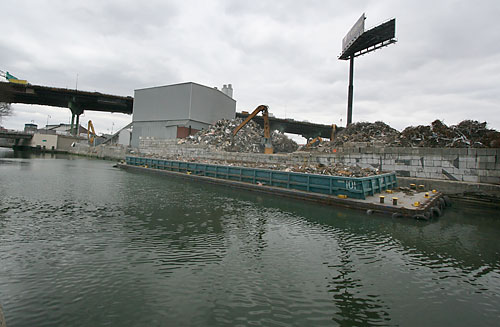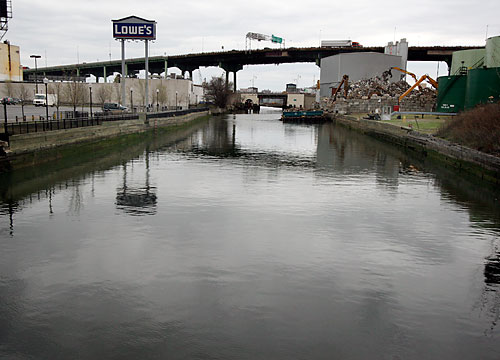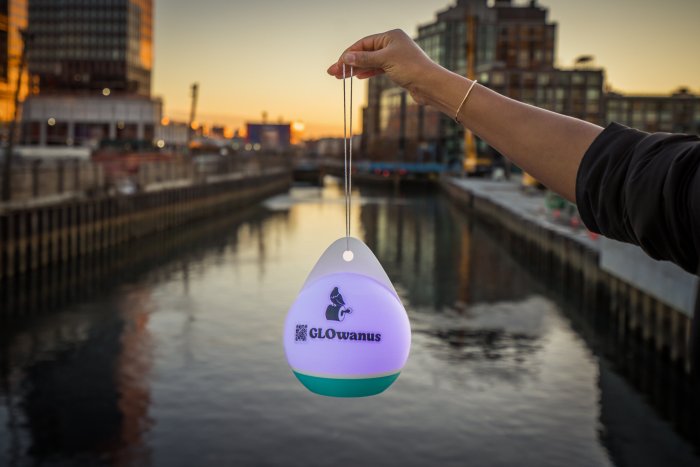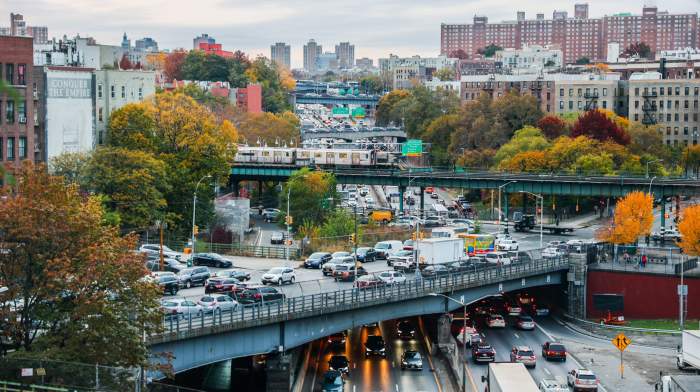Mayor Bloomberg last night trashed a federal proposal to dub the toxic Gowanus Canal a “Superfund site,” saying that such a designation would stifle private investment near the waterway and impede the city’s own environmental remediation.
Federal officials revealed last Wednesday that the 1.8-mile long “Lavender Lake” was on track to become part of the program that cleans contaminated areas with money seized from parties responsible for the pollution and, to a lesser extent, taxpayers.
But last night, the Bloomberg Administration declared its objection to the federal “Superfund” proposal, which was actually initiated by Gov. Paterson.
“Right now, we know that we share the same goal as Environmental Protection Agency and [state] Department of Environmental Conservation — cleaning up the Gowanus Canal so that its full development potential can be realized,” Daniel Walsh, director of the mayor’s Office of Environmental Remediation, told a crowd of about 150 people at a public hearing on the Superfund designation on Tuesday night at PS 32 on Hoyt Street.
Walsh’s comments met with catcalls, but he persisted.
“At this point, we don’t believe that a Superfund listing is the best way to achieve that goal,” he said.
Walsh added that placing the Gowanus on the Superfund registry of more than 1,600 sites nationwide would have a “chilling effect” on the Bloomberg Administration’s residential rezoniong of the neighborhood — a plan that the mayor says would create $400 million of expected private development, thousands of units of housing and open space in the previously industrial neighborhood. The Superfund designation would also interfere with a $175-million effort that would pump more fresh water through the canal and also dredge 1,000 feet of highly polluted sediment from the channel’s bed, Walsh said.
“A Superfund designation could jeopardize all these plans,” he concluded.
Already, that is beginning to appear true.
Toll Brothers, a national homebuilder, has threatened that it might bail out on plans for a 447-unit apartment complex on two blocks adjacent to the channel and representatives from other potential developers said on Tuesday to The Brooklyn Paper that the Superfund listing would discourage financiers from investing with them.
Yet, the state insists that a federally led cleanup will ultimately be good for the area.
“We’re not here to stifle development,” said Robert Schick, the Department of Environmental Conservation’s director of bureau and remediation for the city. “We believe it will spur development.”
The DEC quietly applied in December to get the fetid waterway, which is the final resting place of heavy metals, PCBs, coal tar and other nasty industrial by-products at high levels, included in the Superfund program.
The DEC’s position pleased many people who felt that a total decontamination of the area ought to come before large-scale development, like Toll Brothers’ plans just south of the Carroll Street bridge, as well as a stalled Whole Foods proposed for Third Avenue and Third Street.
“The argument we heard for so long was from forces pushing for development that the only way to clean the canal was to build alongside the Gowanus. Now we see that’s no longer the case,” said Eric McClure, a member of Park Slope Neighbors.
Yet the proposal has driven a wedge through the community, too. Many attendees echoed McClure’s support the Superfund bid, but there was a strong resistance from organized labor, which does not want construction work to evaporate. Others worried that the value of their homes in the canal zone might actually drop because of the so-called “Superfund Stigma.”
The EPA-led Superfund program would be another government orchestrated effort to improve conditions in and around the canal. The city already has plans for renovating the canal’s pumping station and flushing tunnel. Meanwhile, the state oversees three brownfield sites on nearby dry land where National Grid, the gas utility, is eliminating underground sludge from previous gas plants that leak into the canal.
Representatives from the EPA said its work, which would begin with an evaluation of the waterway’s conditions and feasibility study, can compliment rather than complicate the landscape.
“The only way this site is ever going to be cleaned up is by becoming a federal Superfund site,” said Walter Mugdan, the EPA’s director of emergency and remedial response, to a round of applause.
Few details emerged about the cost or timeline of purifying the sluice.
“Timing will be slower than a lot of you might want, but it will be faster than many of you might fear,” said Mugdan.




















